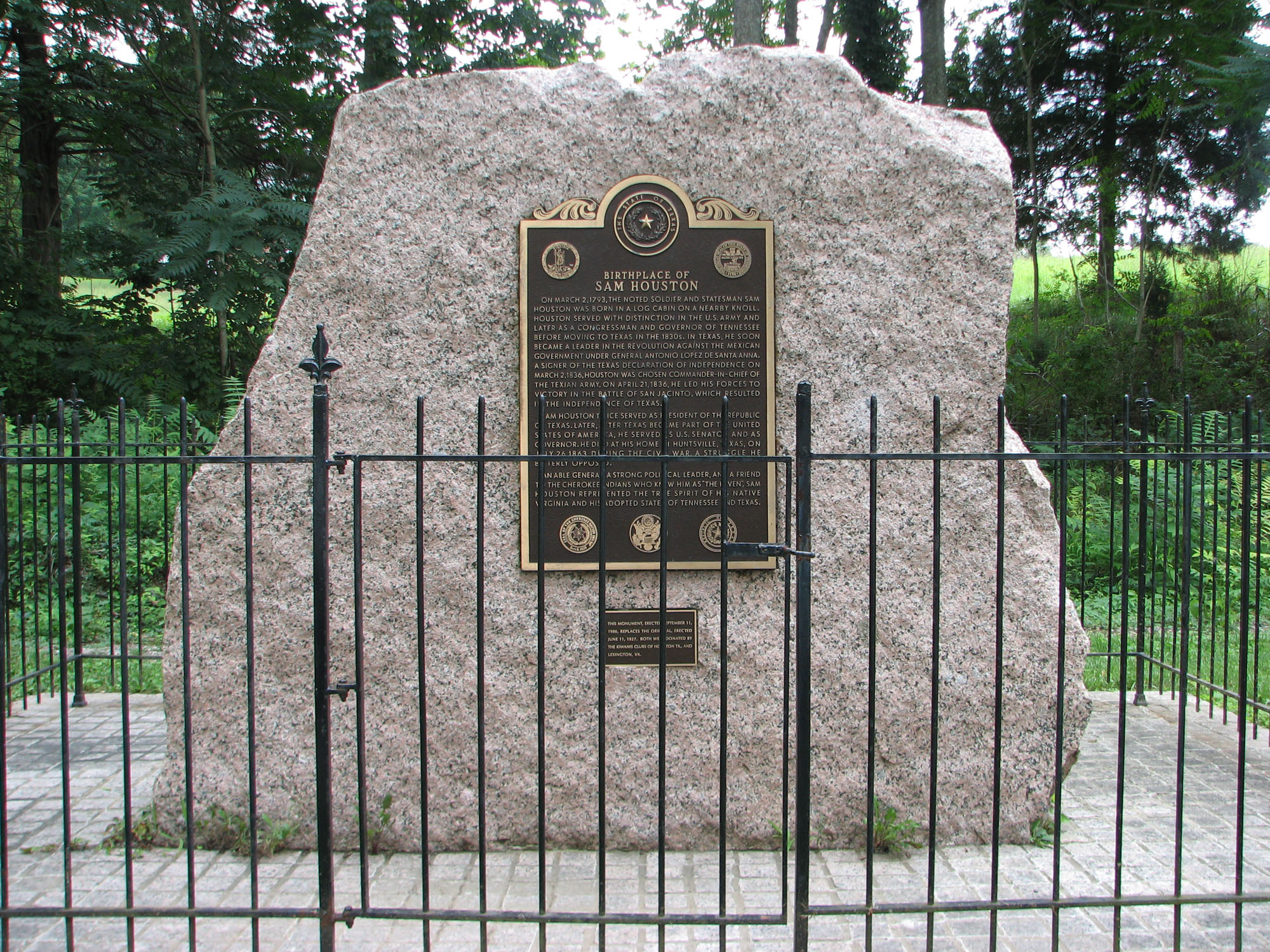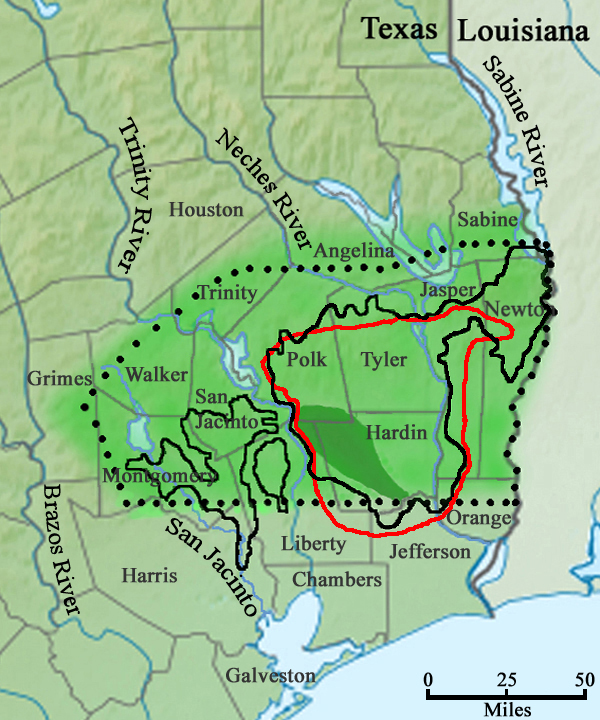|
Alabama–Coushatta Tribe Of Texas
The Alabama–Coushatta Tribe of Texas ( Alabama: ''Albaamaha-Kosaatihaha'', Coushatta: ''Albaamoha-Kowassaatiha'') is a federally recognized tribe of Alabama and Koasati in Polk County, Texas. These peoples are descended from members of the historic Muscogee or Creek Confederacy of numerous tribes in the Southeastern U.S., particularly Georgia and Alabama. They are one of three federally recognized tribes in Texas. As of 2022, the tribe has over 1,200 members with 589 residing on the Texas reservation. History They are one of eight federally recognized tribes whose members are descended from the Muscogee Confederacy of the Southeast. Four tribes are located in Oklahoma, to where most of the Muscogee were forcibly removed from the Indigenous Muscogee homeland in Alabama and western Georgia in the 1830s during the Trail of Tears under Indian Removal, one tribe is in Louisiana, where another band of Muscogee fled European encroachment in two waves in the late 18th century a ... [...More Info...] [...Related Items...] OR: [Wikipedia] [Google] [Baidu] |
Indian Reservation
An Indian reservation is an area of land held and governed by a federally recognized Native American tribal nation whose government is accountable to the United States Bureau of Indian Affairs and not to the state government in which it is located. Some of the country's 574 federally recognized tribes govern more than one of the 326 Indian reservations in the United States, while some share reservations, and others have no reservation at all. Historical piecemeal land allocations under the Dawes Act facilitated sales to non–Native Americans, resulting in some reservations becoming severely fragmented, with pieces of tribal and privately held land being treated as separate enclaves. This jumble of private and public real estate creates significant administrative, political and legal difficulties. The total area of all reservations is , approximately 2.3% of the total area of the United States and about the size of the state of Idaho. While most reservations are small c ... [...More Info...] [...Related Items...] OR: [Wikipedia] [Google] [Baidu] |
Muscogee
The Muscogee, also known as the Mvskoke, Muscogee Creek, and the Muscogee Creek Confederacy ( in the Muscogee language), are a group of related indigenous (Native American) peoples of the Southeastern WoodlandsTranscribed documents Sequoyah Research Center and the American Native Press Archives in the . Their original homelands are in what now comprises southern , much of , western |
Texas Indian Commission
Native American tribes in Texas are the Native American tribes who are currently based in Texas and the Indigenous peoples of the Americas who historically lived in Texas. Many individual Native Americans, whose tribes are headquartered in other states, reside in Texas. The state formed the Texas Commission for Indian Affairs in 1965 to oversee state-tribal relations; however, the commission was dissolved in 1989. Federally recognized tribes Texas has three federally recognized tribes. They have met the seven criteria of an American Indian tribe: # being an American Indian entity since at least 1900 # a predominant part of the group forms a distinct community and has done so throughout history into the present # holding political influence over its members # having governing documents including membership criteria # members having ancestral descent from historic American Indian tribes # not being members of other existing federally recognized tribes # not being previously ... [...More Info...] [...Related Items...] OR: [Wikipedia] [Google] [Baidu] |
Indian Termination Policy
Indian termination is a phrase describing United States policies relating to Native Americans from the mid-1940s to the mid-1960s. It was shaped by a series of laws and practices with the intent of assimilating Native Americans into mainstream American society. Cultural assimilation of Native Americans was not new; the belief that indigenous people should abandon their traditional lives and become what the government considers "civilized" had been the basis of policy for centuries. What was new, however, was the sense of urgency that, with or without consent, tribes must be terminated and begin to live "as Americans." To that end, Congress set about ending the special relationship between tribes and the federal government. In practical terms, the policy ended the federal government's recognition of sovereignty of tribes, trusteeship over Indian reservations, and the exclusion of state law's applicability to Native persons. From the government's perspective, Native Americans we ... [...More Info...] [...Related Items...] OR: [Wikipedia] [Google] [Baidu] |
Sam Houston
Samuel Houston (, ; March 2, 1793 – July 26, 1863) was an American general and statesman who played an important role in the Texas Revolution. He served as the first and third president of the Republic of Texas and was one of the first two individuals to represent Texas in the United States Senate. He also served as the sixth governor of Tennessee and the seventh governor of Texas, the only individual to be elected governor of two different states in the United States. Born in Rockbridge County, Virginia, Houston and his family migrated to Maryville, Tennessee, when Houston was a teenager. Houston later ran away from home and spent about three years living with the Cherokee, becoming known as Raven. He served under General Andrew Jackson in the War of 1812, and after the war, he presided over the removal of many Cherokee from Tennessee. With the support of Jackson and others, Houston won election to the United States House of Representatives in 1823. He strongly supported ... [...More Info...] [...Related Items...] OR: [Wikipedia] [Google] [Baidu] |
Big Thicket
The Big Thicket is the name given to a somewhat imprecise region of a heavily-forested area of Southeast Texas in the United States. This area represents a portion of the mixed pine-hardwood forests of southeast US. The National Park Service established the Big Thicket National Preserve (BTNP) within the region in 1974 and it is recognized as a biosphere reserve by UNESCO. Although the diversity of animals in the area is high, with over 500 vertebrates, it is the complex mosaic of ecosystems and plant diversity that is particularly remarkable. Biologists have identified at least eight, and up to eleven, ecosystems in the Big Thicket area. More than 160 species of trees and shrubs, 800 herbs and vines, and 340 types of grasses are known to occur in the Big Thicket, and estimates as high as over 1000 flowering plant species and 200 trees and shrubs have been made, plus ferns, carnivorous plants, and more. The Big Thicket has historically been the most dense forest region in what is n ... [...More Info...] [...Related Items...] OR: [Wikipedia] [Google] [Baidu] |
Seminole Indian
The Seminole are a Native American people who developed in Florida in the 18th century. Today, they live in Oklahoma and Florida, and comprise three federally recognized tribes: the Seminole Nation of Oklahoma, the Seminole Tribe of Florida, and the Miccosukee Tribe of Indians of Florida, as well as independent groups. The Seminole people emerged in a process of ethnogenesis from various Native American groups who settled in Spanish Florida beginning in the early 1700s, most significantly northern Muscogee Creeks from what is now Georgia and Alabama. The word "Seminole" is derived from the Muscogee word ''simanó-li''. This may have been adapted from the Spanish word ''cimarrón'', meaning "runaway" or "wild one". Seminole culture is largely derived from that of the Creek; the most important ceremony is the Green Corn Dance; other notable traditions include use of the black drink and ritual tobacco. As the Seminole adapted to Florida environs, they developed local traditions, su ... [...More Info...] [...Related Items...] OR: [Wikipedia] [Google] [Baidu] |
Poarch Band Of Creeks
The Poarch Band of Creek Indians ( ;) are a federally recognized tribe of Native Americans in Alabama. Speaking the Muscogee language, they were formerly known as the Creek Nation East of the Mississippi. They are located mostly in Escambia County. Since the late twentieth century, they have operated three gaming casinos and a hotel on their reservation. This has enabled them to generate revenues for education and welfare. History The Poarch Band members descend from Muscogee Creek Indians of the Lower Towns who sided with the United States against the rebelling Northern Creek " Red Sticks" in the Creek War of 1813–1814. Prior to this event, Band ancestors intermarried with whites to a high degree. Descendants primarily were the product of unions between British traders and Creek Indian women. Predominant surnames in the group included the names Weatherford, McGillivray, Durant, McGhee, Moniac, Cornell, Gibson, Colbert, and Rolin. These ancestors adopted more European-Ameri ... [...More Info...] [...Related Items...] OR: [Wikipedia] [Google] [Baidu] |
Indian Removal
Indian removal was the United States government policy of forced displacement of self-governing tribes of Native Americans from their ancestral homelands in the eastern United States to lands west of the Mississippi Riverspecifically, to a designated Indian Territory (roughly, present-day Oklahoma). The Indian Removal Act, the key law which authorized the removal of Native tribes, was signed by Andrew Jackson in 1830. Although Jackson took a hard line on Indian removal, the law was enforced primarily during the Martin Van Buren administration. After the passage of the Indian Removal Act in 1830, approximately 60,000 members of the Cherokee, Muscogee (Creek), Seminole, Chickasaw, and Choctaw nations (including thousands of their black slaves) were forcibly removed from their ancestral homelands, with thousands dying during the Trail of Tears. Indian removal, a popular policy among incoming settlers, was a consequence of actions by European settlers in North America during th ... [...More Info...] [...Related Items...] OR: [Wikipedia] [Google] [Baidu] |
Trail Of Tears
The Trail of Tears was an ethnic cleansing and forced displacement of approximately 60,000 people of the "Five Civilized Tribes" between 1830 and 1850 by the United States government. As part of the Indian removal, members of the Cherokee, Muscogee (Creek), Seminole, Chickasaw, and Choctaw nations were forcibly removed from their ancestral homelands in the Southeastern United States to newly designated Indian Territory west of the Mississippi River after the passage of the Indian Removal Act in 1830. The Cherokee removal in 1838 (the last forced removal east of the Mississippi) was brought on by the discovery of gold near Dahlonega, Georgia, in 1828, resulting in the Georgia Gold Rush. The relocated peoples suffered from exposure, disease, and starvation while en route to their newly designated Indian reserve. Thousands died from disease before reaching their destinations or shortly after. Some historians have said that the event constituted a genocide, although this label ... [...More Info...] [...Related Items...] OR: [Wikipedia] [Google] [Baidu] |
Muscogee Confederacy
The Muscogee, also known as the Mvskoke, Muscogee Creek, and the Muscogee Creek Confederacy ( in the Muscogee language), are a group of related indigenous (Native American) peoples of the Southeastern WoodlandsTranscribed documents Sequoyah Research Center and the American Native Press Archives in the . Their original homelands are in what now comprises southern , much of , western |








